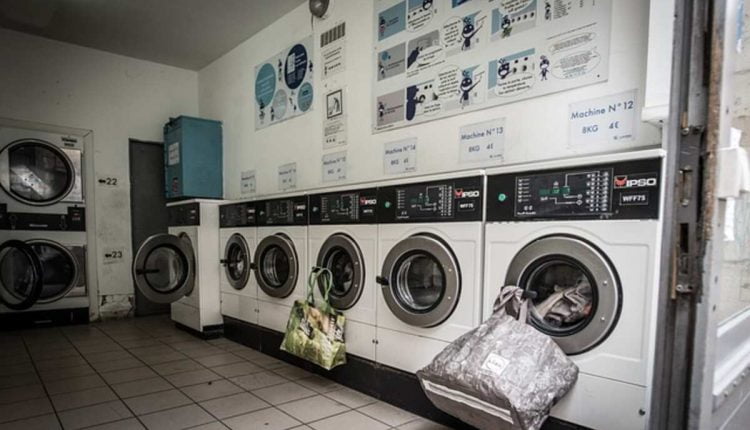Dryers made by Whirlpool and Kenmore can be repaired, even if they are several years old. Doing the repair work alone might save you a lot of money. If someone has to come to fix it, the cost might add up quickly. Not purchasing brand new will save you a ton of money. And what do you know? When in good working order, it’s as simple as any modern dryer and dries clothes quickly and efficiently.
First, a safety reminder: switch off the dryer’s power supply before doing any repairs.
To facilitate maintenance, the exhaust pipe should be removed from the back. The dryer’s exhaust is channeled through a 4-inch aluminum flexible pipe, which is used to vent the appliance’s hot air and lint. The dryer wasn’t doing something; you had to figure out what it was. Was it able to run but not produce heat? Was it only blowing chilly air and not helping to dry the laundry? Several factors can bring this effect. Take the dryer’s metal back off. Multiple 14″ or 3/8″ screws hold it in place. Check out the wiring. Inspect all wires, especially those leading to heat, and any thermostats. Grab the cables and make sure they’re secure. You can use a flashlight or a problem light to help you spot them if you need to. Sometimes one will be unplugged because the terminal burns. Cutting off the burned end and replacing the fastener are all required to fix this.
If the wiring seems OK, it’s time to examine the heat element’s thermostats. Simply removing the wires and testing with a continuity tester will reveal whether or not they will allow current to flow. If a circuit is open, a new one must be installed. If they are fine, the heating element should be checked. Heat elements in dryers often have two terminals. Disconnect the cables and use a continuity tester on the heating element.
For around $15, you may get a continuity tester from the retailer. A simple one can be fashioned with a flashlight battery, bulb, and wire. Connect one end of the wire to the battery’s terminal and the other to the battery’s positive terminal via solder. Attach a wire to the light bulb’s base by soldering it there. The choice of cable is irrelevant. Add another wire to the bulb’s end by soldering. Strip off the insulation from the remaining two wires. Your meter is ready to go! Connect the two wires and see if anything happens. It ought to turn on now. Connect the two wires to either the thermostat’s terminals or the heat element’s terminals. The component is functional if the bulb glows.
Related Posts
Replace the heating element if it has failed. To get to the old stuff, you’ll need to unsnap the dryer’s top and lift it. To do so, pry open the space between the top and the front cabinet using a putty knife, leaving a gap of about 3 inches on either side of the dryer. This unlatches the two clasps at the top’s front edge. Simultaneously, insert a flat screwdriver between the front center of the top and the cabinet. If the fasteners are undone, the front can be lifted and moved back so that it rests on the wall behind the dryer. If the top won’t come off quickly, look for the release clips and use a putty knife to pry them back into place.
There is one screw atop the heating element. The only thing keeping the heating element in is that. It’s held in place by a groove at the base. Please illustrate the wiring between the heating element and the thermostat(s). Then, unhook the wires connecting the part to the thermostat on the side of the heater’s casing. Remove the lone fastener from the housing’s top. The housing can be removed from its holding slot by pushing it backward. Then, please remove it from the dryer’s bottom by lifting it up and out of the places. Remove the heating element from its housing by removing the single screw at its base. Remove the old one and replace it with the new one using the screw. Fasten the element back into the dryer and reconnect the power cord. Connect the dryer’s power wire and switch it on to test the heating element.
The problem could be the motor or one of the switches on the top of the cabinet if the thermostats, cables, and heating element check out. The internal heat element is connected to a safety switch. If the motor should fail, this will turn off the heating element to prevent the clothing from catching fire.
The two bearing wheels that support the drum should be replaced if the dryer still heats properly but is extremely noisy. The belt’s idler pulley should be replaced as well. You can access these by opening the dryer’s bottom front panel. The belt should be changed if the engine is running, but the drum is not turning. The motor should be replaced if it hums but does not run. While these aren’t the only potential dryer problems, they are among the most common. Have fun! Take care! Before you start working on it, unplug it!
(c) 2007 by Ronald Jensen. Written by Ronald Jensen. Legally, that is.
Visit the first website and fill out the form to get your free copy of our ebook on how to get started making money online.
Read also: How to Pick Video Games Both Parents and the Kids Will Love


